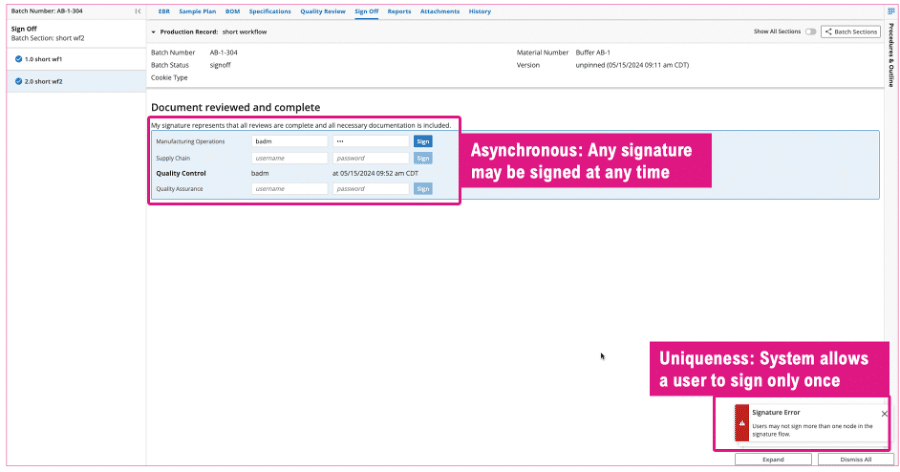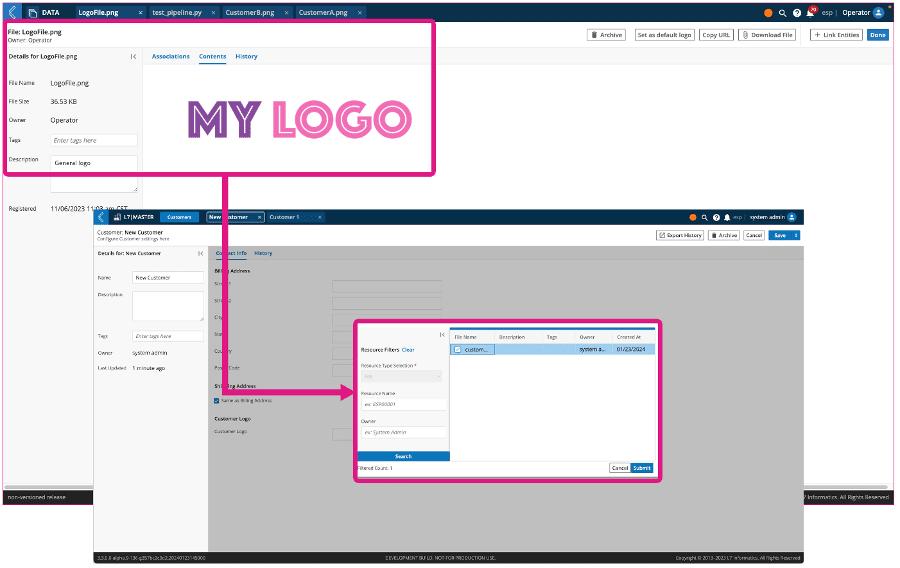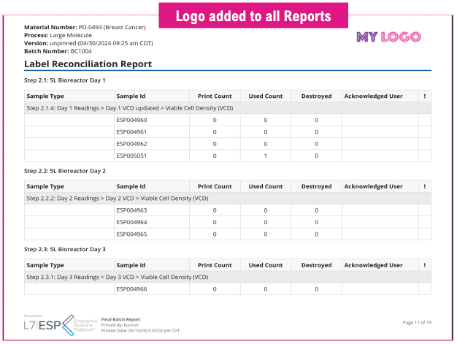L7 | CHATS
product update
L7 MES, The Comprehensive Manufacturing Execution System for the Precision Therapeutics Workflow
by Karri Unruh | posted on August 15, 2024
Manufacturing of pharmaceutical products is complex and time-consuming, often resulting in delays, deviations, and unplanned, increased costs. Traditional processes frequently operated with complex, paper-based ecosystems, rigid manufacturing electronic systems, and non-compliant spreadsheets can bottleneck operations, resulting in delayed product dispositions.
Consider a fully flexible, digital, and process-oriented solution designed to overcome traditional pharmaceutical manufacturing bottlenecks to improve ROI across your value chain!
L7 Informatics has built the digital solution L7 MES to streamline entire productions in the pharmaceutical industry while enabling review-by-exception manufacturing and ensuring 21 CFR Part 11 compliance for the production of small molecules, biologics, and CGT products.
Importantly, L7 MES is part of the Unified Platform L7|ESP® where manufacturing execution system data resides in the same database as LIMS and inventory data. It uses existing L7|ESP workflow chain configurations to represent the manufacturing process and registers samples during the manufacturing process to send to LIMS.
I am excited to share with you what’s new in the L7|ESP v.3.3 release of L7 MES.
More Intuitive Quality Review
Operations review via the Reviewer Portal has been improved for manufacturing reviewers. This improvement helps reviewers to easily navigate to fields with flagged exceptions (Figure 1).

Figure 1: Intuitive quality review portal includes a list of flagged, highlighted exceptions for each field.
Exception Triage and Assessment
L7 MES now allows quality reviewers to triage exceptions by assigning a Risk Level and an Exception Type, such as CAPA, deviations, or other assessment classifications. If configured, Risk Levels and Exception Types can also be pushed into a QMS, training, or other third-party system with a simple click, saving the additional step of entering the information again.
Signature Flow Enhancements
The signature flow experience has been enhanced to enable users to sign asynchronously or enforce user uniqueness as depicted in Figure 2. With signature flows that have been configured to “Allow Asynchronous”, there is no forced order of signing by the respective individuals, which simplifies the signature process if multiple individuals must sign. With signature flows that have been configured to “Enforce Uniqueness”, the system requires that each signer can only enter their credentials once within the signature flow.
The end users that benefit the most from the improved signature flow experience are lab directors, manufacturing heads, program/project managers, material handlers, and quality reviewers (e.g., QA/QC associates and regulatory specialists). In other words, individuals who need to ensure that each department or role is represented by a different person or who have to wrangle multiple signers who want to sign when they are ready without waiting for earlier signatures to be entered.

Figure 2: Asynchronous and Unique Signature Flow in L7 MES. The system allows users to sign in any order and can also enforce that a user may only sign once.
Report Labeling/Theme Support
A form of white labeling has been added to the already existing universal theme labeling provided within L7|ESP. This new, extended theme support capability allows L7|ESP customers to label L7 MES standard reports with the logo of their own customers before sharing the reports with them. Logos of image file format JPEG and PNG are supported (see Figure 3). This is of interest when sharing manufacturing results with customers (i.e., a CDMO is sharing the Final Batch Report with a pharmaceutical, biotechnology, or medical device client), as shown in Figure 4.

Figure 3: Add customer logo to reports. As customer information (e.g., contact information, customer history) is populated in L7|ESP, the customer logo can also be attached to the customer file.

Figure 4: L7 MES report labeling with customer logo. All reports generated for a specific customer that has a customer logo associated with its customer file (i.e., customer information) will have automatically a logo placed on the generated reports.
Adding Watermarks on Reports for Failed Batches and Non-Executed Sections
To ensure that any reviewer understands why there is no data recorded for some sections or when there are no executed sections, an added watermark “Not executed” is added to the final report (not shown). This is particularly important for batch processes, as they sometimes contain optional activities. Furthermore, reports generated for failed batches now indicate that the batch failed with the annotation “Failed Batch” across all pages of the final report.
Please connect with us to learn more about L7 MES and the L7|ESP platform, with its Workflow Orchestration and Data Contextualization, and how these solutions can help you with your laboratory and business processes. I am certain you will not be disappointed.
